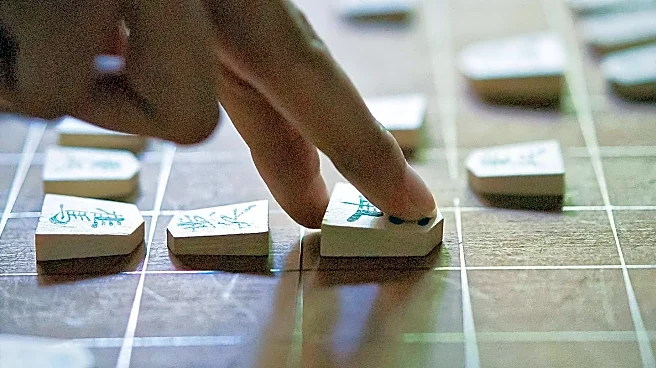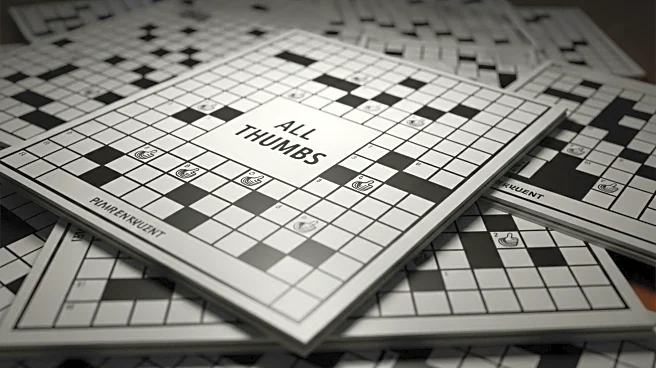What's Happening?
The New York Times Strands puzzle for October 12, 2025, presents a challenging theme titled 'Follow Suit.' The puzzle requires players to find hidden words that fit the theme, with the spangram 'TRICKTAKING' being a key component. Players are encouraged to unscramble words and use clues such as 'Deal me in' to solve the puzzle. The puzzle includes words like WHIST, BRIDGE, EUCHRE, SPADES, PINOCHLE, and HEARTS, which align with the theme. The Strands puzzle is part of a series of daily puzzles offered by the NYT, including Wordle, Connections, and Mini Crossword, providing a variety of brain-teasing challenges for puzzle enthusiasts.
Why It's Important?
The NYT Strands puzzle is a popular feature among puzzle enthusiasts, offering a unique challenge that combines wordplay and thematic elements. The puzzle's complexity and engaging nature contribute to its appeal, attracting a dedicated audience that enjoys testing their linguistic and problem-solving skills. The inclusion of themes like 'Follow Suit' adds an extra layer of intrigue, encouraging players to think creatively and strategically. The puzzle's popularity reflects the growing interest in brain games and their role in promoting cognitive health and entertainment.
What's Next?
As the NYT continues to offer daily puzzles, players can expect more challenging themes and innovative formats that push the boundaries of traditional word games. The success of the Strands puzzle may lead to the introduction of new puzzle types or variations, catering to a diverse audience with varying skill levels. The NYT's commitment to providing engaging content ensures that puzzle enthusiasts will have access to fresh and stimulating challenges, fostering a vibrant community of players who share a passion for word games.
Beyond the Headlines
The popularity of puzzles like the NYT Strands highlights the cultural significance of word games in contemporary society. These puzzles not only serve as a form of entertainment but also contribute to cognitive development and mental agility. The rise of digital platforms has made puzzles more accessible, allowing players to engage with them anytime and anywhere. This trend underscores the importance of interactive content in the digital age, where users seek engaging and intellectually stimulating experiences.











